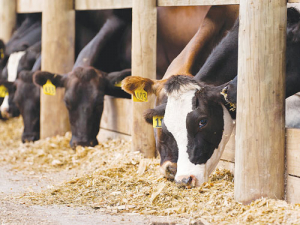As a young Ministry of Agriculture and Fisheries consultant in Northland in the early 1980s, I was intrigued how even in the toughest conditions – droughts caused by extreme La Nino weather – some farmers still did well.
One of the best in my region was a gnarly old chap with a wry smile whom I asked one day what the secret of farming in Northland was. He said, “It’s simple son: a stack of silage and a barn of hay.” What he was saying was that a backup feed supply as a risk control measure made good economic sense.
A few other lessons I have learnt when I remember back to seasons like the present one are:
Bank the feed
Unlike grazed forages, maize silage is one of those feeds that keeps well if you don’t need it. This year we have seen farmers being forced to feed their turnip crops off even though they have heaps of grass available. The beauty of stored forage such as maize silage and grass silage is that as long as the cover stays intact, once the maize silage has been ensiled it will keep forever. If you don’t need to open the stack because you have enough grass, don’t open it. As sure as eggs, there will come a time in the next 365 days when you will need that feed.
Honour the contract
Due to regular rain and warm growing conditions most farms now have heaps of grass. In past seasons some farms have been tempted to pull out of contracted maize silage simply because they currently have enough grass. In almost every situation, farmers who have done this have regretted the decision as sometime in the following season they wished they had honoured their contract and bought the feed. Remember, consistent farming requires a good backup feed source and there is no better feed than maize silage.
Drymatter doesn’t mean much
Five seasons ago we had a maize season similar to this one. It was hot and sunny and we had enough rain to grow magnificent maize. Many farmers signed contracts stipulating they didn’t want maize silage with drymatter over 40%, only to get maize with dry matter above this.
I got many phone calls from maize sellers and maize buyers worried about high drymatter maize despite the plant being relatively green at harvest. The answer was simple: seasonal conditions resulted in the plant producing a lot of grain. As grain is high in drymatter and because grain made up a large part of the plant, the maize silage had a lot higher dry matter than normal. Typically we were seeing maize at 40%DM or higher, 35% starch and an ME level of 11.2-11.5mkme/kgDM. I suspect we may have one of those seasons.
Relax, the contractor will get there
Many farmers get wound up about things unnecessarily. There has been a lot of heat this year. While we have found it pretty hard to cope with, the maize has absolutely loved it. The wet spring planting season was troublesome in many regions and many growers were worried that we would have another delayed harvest. As is often the case, the worry was pointless. The season meant that many farmers were reporting maize well above fence height at Christmas and our area managers are reporting that the harvest looks like it will be early and condensed.
This is something you may not want to hear. But just as the worry in the spring was pointless, worry now is just as pointless.
As long as you have communicated with your contractor well in advance, he will get to your maize. The wet summer is likely to mean that the plant will stay greener for longer and will be laying down more starch while you wait. So relax and keep communicating; the contractor will get there.
• Ian Williams is a Pioneer forage specialist. Contact him at This email address is being protected from spambots. You need JavaScript enabled to view it.
















